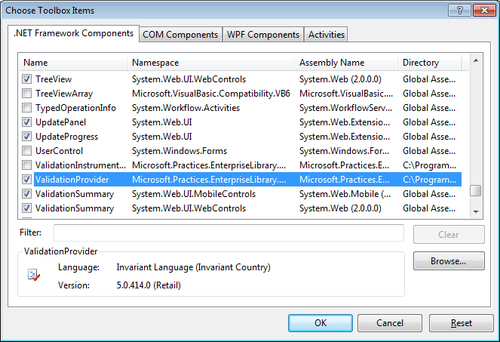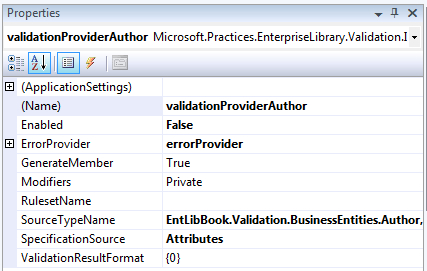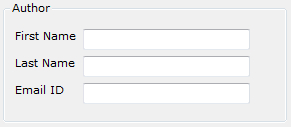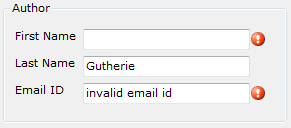The Validation Application Block provides integration with Windows Forms applications and validates user input. The ValidationProvider component part of the Microsoft.Practices.EnterpriseLibrary.Validation.Integration.WinForms assembly is an extender provider that adds additional properties to Windows Forms controls. Validation can be performed by using the Control.Validating event or it can be invoked manually in our code using the ValidationProvider.PerformValidation(Control) method. Additionally, it provides integration with Windows Forms ErrorProvider component to display visual indication to the user of the error.
Note
We must add reference to the Microsoft.Practices.EnterpriseLibrary.Validation.Integration.WinForms.dll to leverage the integration features.
- Add
ValidationProviderto the Toolbox. - Right-click on the Toolbox and click Choose Items... menu, this will load the Choose Toolbox Items dialog. In the .NET Framework Components tab, select the ValidationProvider component.


- Add ErrorProvider and a
ValidationProvidercomponent to the Windows Forms.
- Configure
ValidationProviderby selecting theErrorProvidercomponent and by assigning theSourceTypeNameto the fully qualified name of the type to be validated. Optionally,RulesetNamecan be configured to use a specific Rule Set; also the component can be enabled or disabled by setting theEnabledproperty.
- Configure controls for validation.
- Assuming we want to validate the
Authorclass, which consists of First Name, Last Name, and Email ID, sinceValidationProvideradds additional properties to the controls, we can configureSourcePropertyNameto the respective property name in theAuthorclass.ValidatedPropertyis set toTextby default for aTextBoxcontrol andPerformValidationis set toTrueby default.
- The following screenshot shows the extended properties that have to be configured.
SourcePropertyNamedetermines the property to be used of the type configured in theValidationProvider.
- Perform validation either using
ValidateChildrenor theValidationProvider.PerformValidation(Control)method. - The following code snippet shows the validation call using the Windows Forms
ValidateChildrenmethod:this.ValidateChildren(ValidationConstraints.Visible);
- The following code snippet shows the validation call using the
ValidationProvider:validationProviderAuthor.PerformValidation(textBoxFirstName);

